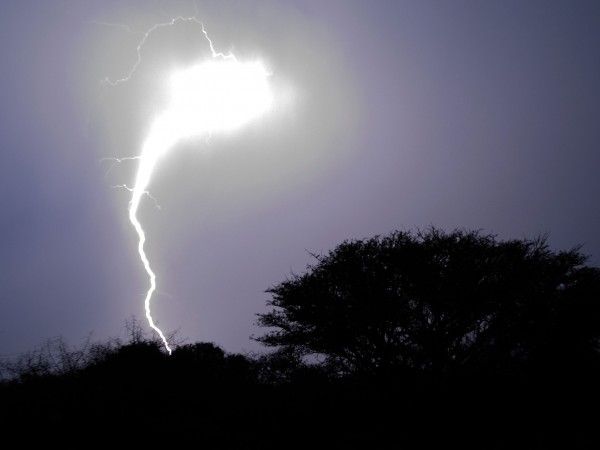Origin : first accounts dated back from Antiquity
Description : A slow-moving ball of light that is occasionally seen at ground level during thunderstorms. It is generally believed that ball lightning is a ball of plasma, and some scientists believe that it is similar to the highly luminous plasma disks that are formed when explosives are detonated. The ball can typically can measure 30 centimeters across.

Time : During thunderstorms
Records : 5 000+
Theory : Many theories on ball lightning have been put forward over the years but none can explain all of the characteristics observed. John Gilman of the University of California at Los Angeles suggests that the plasma ball has a very low density – comparable with the density of air – and is made up of Rydberg atoms.
These are atoms whose valence electron has been excited into an orbital with a very high quantum number. He calculates that the radius of such an orbital could be as large as a few centimeters, and that the average atom would thus have a very large polarizability.
Attractive Van der Waals interactions – which increase as the polarizability of atoms increase – could then be responsible for the cohesion between the atoms. He computes a value for the cohesive energy per atom to be about one hundredth that of a metal.
Location : outdoors
John Abrahamson, who works on ball lightning at the University of Canterbury in New Zealand, says that Gilman’s model is “imaginative” but adds that “it does not seem workable for several reasons”. Abrahamson says that the Rydberg model requires each electron to be separated from its nucleus by a distance of several centimeters. “This is a huge distance for atomic orbitals,” he told PhysicsWeb. In 2002 Abrahamson and co-worker, James Dinniss, suggested that ball lightning occurs when silicon is oxidized in the atmosphere following a lightning strike.
Magnetophosphenes have also been proposed as an explanation for ball lightning. Magnetophosphene are flashes of light that are seen when one is subjected to a changing magnetic field such as when in an MRI. This changing field causes current within the optic nerve resulting in the illusion of light. In one series, 8 out of 1023 people having an MRI experienced flashing lights.
A new theory, reported in a paper in the Journal of Geophysical Research Atmospheres, proposes that ball lightning occurs in houses and aeroplanes when a stream of ions accumulates on the outside of a glass window and the resulting electric field on the other side excites air molecules to form a ball discharge. The discharge requires a driving electric field of about a million volts.
“Other theories have suggested ball lightning is created by slowly burning particles of silicon formed in a lightning strike, but this is flawed. One of the ball lightning observations cited in this paper occurred when there was no thunderstorm and was driven by ions from the aircraft radar operated at maximum power during a dense fog,” explained Dr John Lowke, scientist with the CSIRO’s Materials Science and Engineering.
The new theory gives the first mathematical solution explaining the birth or initiation of ball lightning using standard equations for the motion of electrons and ions.
Story: British occultist Aleister Crowley reported witnessing what he referred to as “globular electricity” during a thunderstorm on Lake Pasquaney in New Hampshire in 1916. He was sheltered in a small cottage when he
“noticed, with what I can only describe as calm amazement, that a dazzling globe of electric fire, apparently between six and twelve inches (15–30 cm) in diameter, was stationary about six inches below and to the right of my right knee. As I looked at it, it exploded with a sharp report quite impossible to confuse with the continuous turmoil of the lightning, thunder and hail, or that of the lashed water and smashed wood which was creating a pandemonium outside the cottage. I felt a very slight shock in the middle of my right hand, which was closer to the globe than any other part of my body.”
Probability: 3/10








